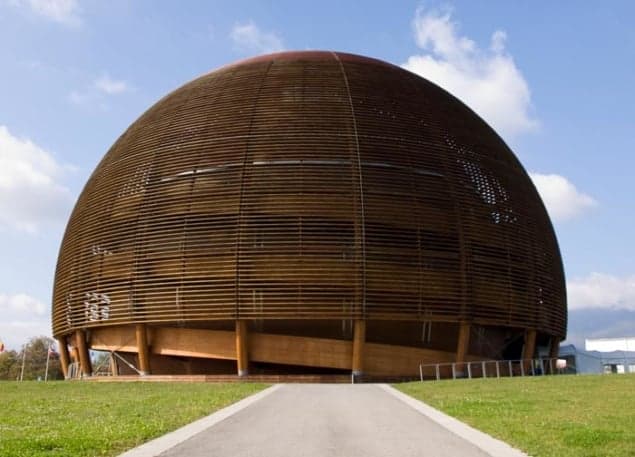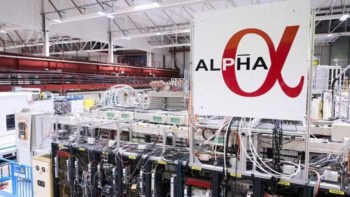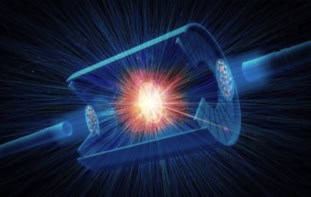
An international group of physicists has called for the construction of the Neutrino Factory as the next high-intensity neutrino facility in Europe. Taking four years to prepare, the report was written by the EUROnu collaboration, which consists of 15 institutions. The report backs the Neutrino Factory – which is estimated to cost between €4.6bn and €6.5bn – rather than two less-expensive options: the €1.6bn Super-Beam experiment and the €2.3bn Beta Beam facility.
The Neutrino Factory will involve producing neutrinos by firing a high-power proton beam at a target to make pions, which are then captured and allowed to decay to muons. The muons are then accelerated and injected into a storage ring where they decay into neutrinos, which are sent some 2000 km to the Magnetized Iron Neutrino detector, which would be made from 100,000 tonnes of iron.
Long-distance oscillations
One possible scenario for the Neutrino Factory is to have the accelerator based at CERN with a detector in Finland, the UK or even the US. The primary aim of this experiment – and other existing and planned experiments that send neutrino beams over long distances – is to study neutrino oscillation. This is the process by which neutrinos of one flavour (muon neutrinos at the Neutrino Factory) can with time change into neutrinos of a different flavour. Making more precise measurements of neutrino oscillations could help solve several important mysteries of physics, including why there is much more matter than antimatter in the universe.
The EUROnu report concludes that the 10 GeV Neutrino Factory “clearly has the best physics performance” over the two other designs, adding that the better performance level “offsets the additional cost”. The report recommends construction “as soon as possible” and if funding can be found, then the facility could be operational between 2025 and 2030.
Enormous potential
Kenneth Long, an experimental particle physicist at Imperial College London and a member of EUROnu, says that the scientific impact of the Neutrino Factory is “potentially enormous” and has the capacity to solve some of the biggest challenges in physics, such as the nature of dark matter. However, he warns that the ultimate fate of the facility will lie in the hands of funding agencies. “The scale of investment would require an international agreement,” he says.
The Super-Beam experiment would have focused a beam of pions and then measured how they decay into neutrinos as they travel to a detector. Beta Beam was designed to produce beams of neutrinos, possibly at CERN, and then send them towards the proposed MEMPHYS water-Cerenkov detector that could be based at the Fréjus Underground Laboratory near the Swiss–Italian border. But Alain Blondel, a neutrino physicist at the University of Geneva who is not involved in the EUROnu collaboration, says the Super-Beam and Beta Beam have “serious difficulties or shortcomings”, while “the Neutrino Factory is a much more powerful, long-term facility”.
Long explains the fundamentals of neutrino physics in the video “Why do neutrinos change flavour?”.



